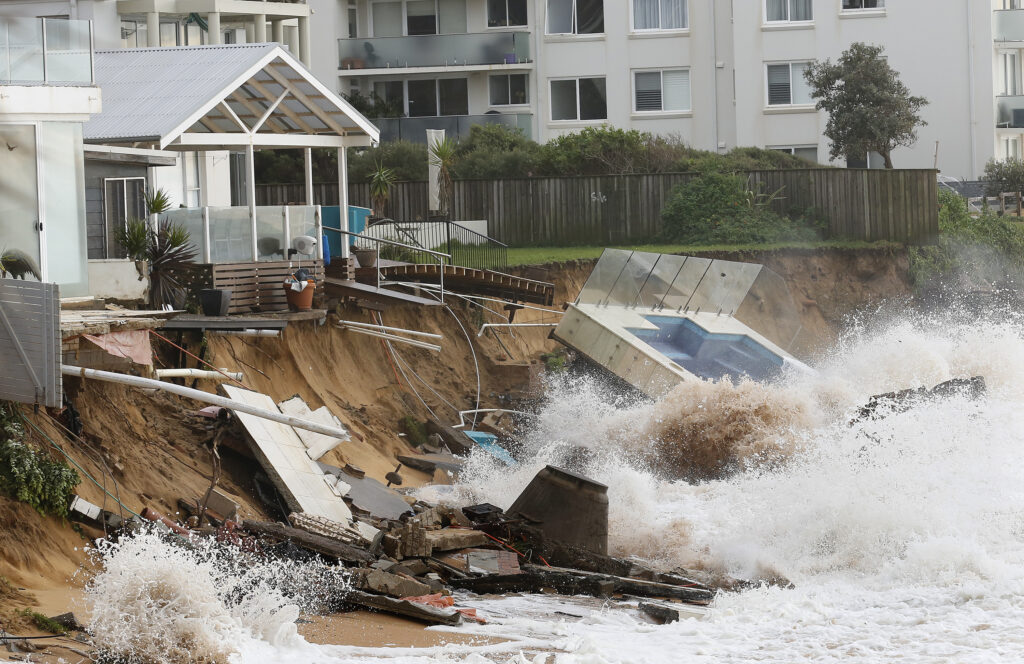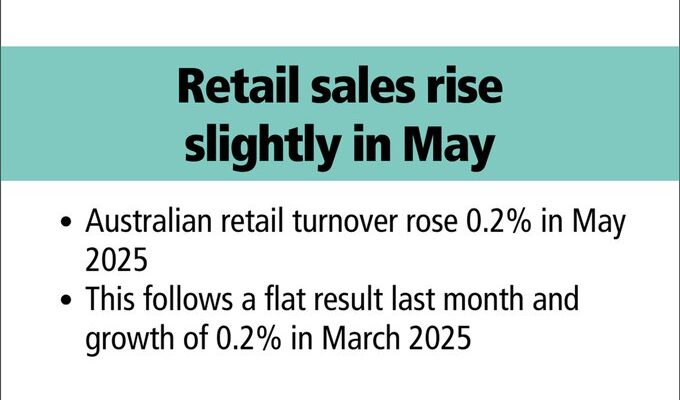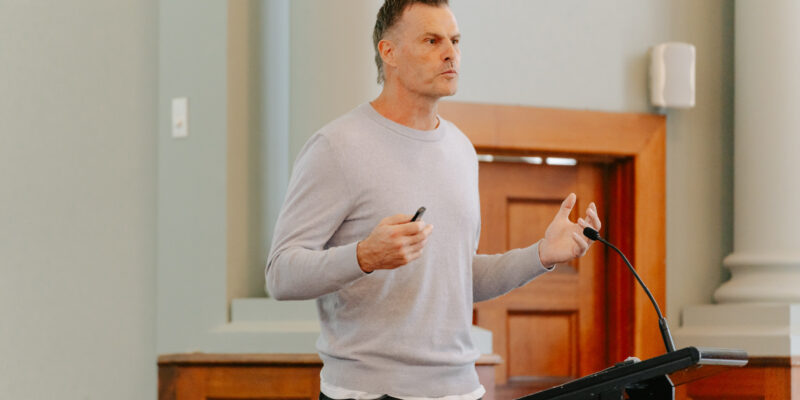Coastal erosion’s effect on the lives of the rich and famous
Sydney’s Cronulla and Manly and Melbourne’s Brighton and Port Melbourne – and the celebrities who own properties there – are topping the top 20 list of real estate hotspots at risk of rising sea levels.

AS coastal erosion makes an impact up and down Australia’s shoreline, some of the country’s most coveted real estate hotspots – and home to the multimillion dollar dream piles of the rich and famous – are facing imminent threat.
Coastal havens like Byron Bay in northern NSW, where Hollywood stars Chris Hemsworth and Matt Damon own palatial digs; Perth’s suburb of Cottesloe, home to mining billionaire Andrew ‘Twiggy’ Forrest; and Portsea in Victoria where transport magnate Lindsay Fox has a family compound; are already being affected by creeping coastal erosion.
“Rising sea levels mean that higher tides are eroding coastlines more rapidly,” says Andy Crawshaw from risk-mapping company Groundsure. “At the same time, more intense storms and shifting weather patterns are increasing the frequency and severity of coastal flooding, which further accelerates erosion.
“This combination of rising sea levels and stronger storms is putting increasing pressure on coastal areas, particularly those with high-density development and significant property investment.”
On Queensland’s Gold Coast, mining billionaire Clive Palmer and his extended family own a number of mega mansions in Paradise Point. The swanky suburb has been identified by CoreLogic’s Coastal Risk Index as being the most financially at risk in the country, with a very high exposure rating affecting 449 dwellings, valued at $1446.9million. Palmer’s stake in the waterside estate – including a $20million spaceship-inspired mansion – is estimated at $40million.
Government agency Geoscience Australia says approximately 39,000 buildings across the country are located within 100 metres of ‘soft’ erodible shorelines, placing them at increased risk due to sea-level rise.
“The extent and timeframe of erosion impacts vary across regions, influenced by factors such as local geomorphology, sea-level rise, and human activities,” says the agency.
Climate analyst Thomas Mortlock, an Adjunct Fellow at the Climate Change Research Centre, UNSW, says, “the impact of sea-level rise at the coast is not just a gradual increase in water lapping at the shore. An increase in tide heights (both higher high tides and higher low tides) increases the probability of coastal flooding and erosion when storms come along”.
“As a rule of thumb,” says Mortlock, “every 10cm of sea-level rise triples the frequency of a given coastal flood. Another rule of thumb, known as the Bruun Rule, suggests a 1cm rise in sea level leads to a 1metre retreat of the coastline.”
According to its Climate Change Risks To Australia’s Coast report, the Department of Climate Change says up to 250,000 properties countrywide have been identified as “potentially exposed to inundation with a sea level rise scenario of 1.1 metres”.

In Old Bar on the NSW Mid-North Coast, the entire beach including some of the million dollar homes along the beachfront could be lost to the rising tides by 2050, according to Groundsure mapping (see diagram).
While, in Victoria, Bayside Brighton – a real estate favourite of AFL legend Chris Judd and his wife Bec – and Port Philip Bay are suburbs also deemed high risk for property loss due to coastal erosion and inundation, with a combined $900million worth of properties likely affected, according to CoreLogic.
Meanwhile, Groundsure – a global specialist in property-specific environmental and climate data analysis and assessment – has pinpointed its Top 20 areas in NSW already facing “significant risk due to a combination of historically high erosion rates, susceptible coastal geomorphology, and the dense concentration of properties situated in close proximity to the shoreline”.
“Coastal erosion risk is defined by the interplay between the hazard itself (coastal erosion) and the exposure of people and assets to this hazard,” Crawshaw tells Australian Conveyancer magazine. “The close proximity of properties to highly vulnerable coastlines has made these areas in our Top 20 list of cities and towns especially prone to the impacts of coastal erosion.”
Currently sitting at number #1 on Groundsure’s Top 20 is Port Stephens on the NSW mid-north coast, the childhood home of Please Like Me actor Seth Drury and the idyllic location of UK celebrity chef Rick Stein’s celebrated Bannisters Hotel.
In Sydney’s south, beachside Cronulla – the shire home and birthplace of many famous Aussies including Olympian Ian Thorpe, former Prime Minister Scott Morrison and model Lara Bingle – currently ranks at #2 on the Groundsure at risk list. And, in the company’s modelling for the next 30 years, Cronulla is expected to take the unenviable number one spot in NSW for vulnerability to coastal erosion.
One of Sydney’s ritziest eastern suburbs, the exclusive enclave of Vaucluse, where radio shock jock Kyle Sandilands lives with wife Tegan in their $13million digs, comes in at #7 on the Groundsure at risk list.
While Watson’s Bay also makes the Top 20. Sobering news for Mad Max director George Miller, who owns a string of luxury homes on the beach at Camp Cove, alongside his neighbours, former Westfield chief Steven Lowy and his wife Judy.
In Wamberal – just up the road from our Prime Minister Anthony Albanese’s new $4.3million clifftop mansion in Copacabana on the NSW Central Coast – affected homeowners are facing uncertainty.
“Multimillion-dollar beachfront properties in Wamberal are located on a cliff that is eroding at a rate of over one metre per year. With rising sea levels, stronger storms, and the potential intensification of future El Niño/La Niña events, the stability of these expensive investments could be at serious risk,” says Crawshaw.

According to the Australian Bureau of Meteorology (BOM), global mean sea levels have increased by over 22cm since 1900, with half of those rises occurring since 1970.
“Sea levels are rising around Australia,” says the BOM, “including more frequent extreme high levels that increase the risk of inundation and damage to coastal infrastructure and communities.”
And, according to coastal climate risk management framework CoastAdapt, the likely estimate of sea-level rise in Australia by 2090 is about 45-82cm higher than 1986-2005 levels.
In Manly, hometown to former NSW Premier Gladys Berejiklian, comedian Kitty Flanagan and world champion surfer Layne Beachley, up to 21 houses and 109 apartments, valued at $462.1million, could be at risk as sea levels rise, says CoreLogic.
While further along Pittwater Road on Sydney’s northern beaches, Collaroy, the popular residence of retired footballers including FOX sports presenter Matty Johns and wife Trish, could experience erosion affecting $376million worth of residential property.
Collaroy has already experienced extensive erosion damage during the June 2016 east coast low swells and, as a result, the Northern Beaches Council constructed a 250m rock revestment seawall in front of the beach’s carpark, using around 14,000 tonnes of sandstone to shore up the area. In February (2025) further exisiting rock sea walls will be replaced by “newly designed structural rock seawalls that will better protect the area from erosion”.
Legal advice from international law firm Norton Rose Fulbright, commissioned by Groundsure, counsels Australian real estate lawyers and conveyancers that they already have a “duty of care to advise and warn their clients about climate risks”.
And Groundsure’s Andy Crawshaw says it’s important homeowners and prospective buyers are aware of risks to their properties so they can best plan for the future.
“Climate change is already considered a Tier 1 risk by lenders on the impact to investment and value,” says the property data expert, “and homeowners in some affected locations are already living with the consequences through higher insurance premiums. So it definitely pays to stay informed.”




